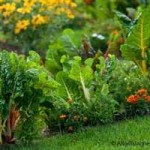by Catherine Haug, February 28, 2017; Updated March 2, 2017 (photo, right and below by Niko Jacobs)
A new CSA is in the works for the Bigfork/East Lake Shore area! is adding a community supported agriculture (CSA) enterprise to their cherry and blueberry orchards. The CSA is owned by Wade and Shelli Riedesel of Yellow Bay Gardens. You may recognize the business name if you bought their blueberries at Bigfork Harvest Foods. They are located at the old Yellow Bay Store property on the East Shore of Flathead Lake (Hwy 35).
Their goal is to provide fresh, local and sustainably grown quality produce. They have added a vast garden and greenhouse for this purpose. While they are not certified Organic, they practice organic and sustainable methods to grow as naturally as possible.
Produce available for 19 weeks beginning mind-May through September.




